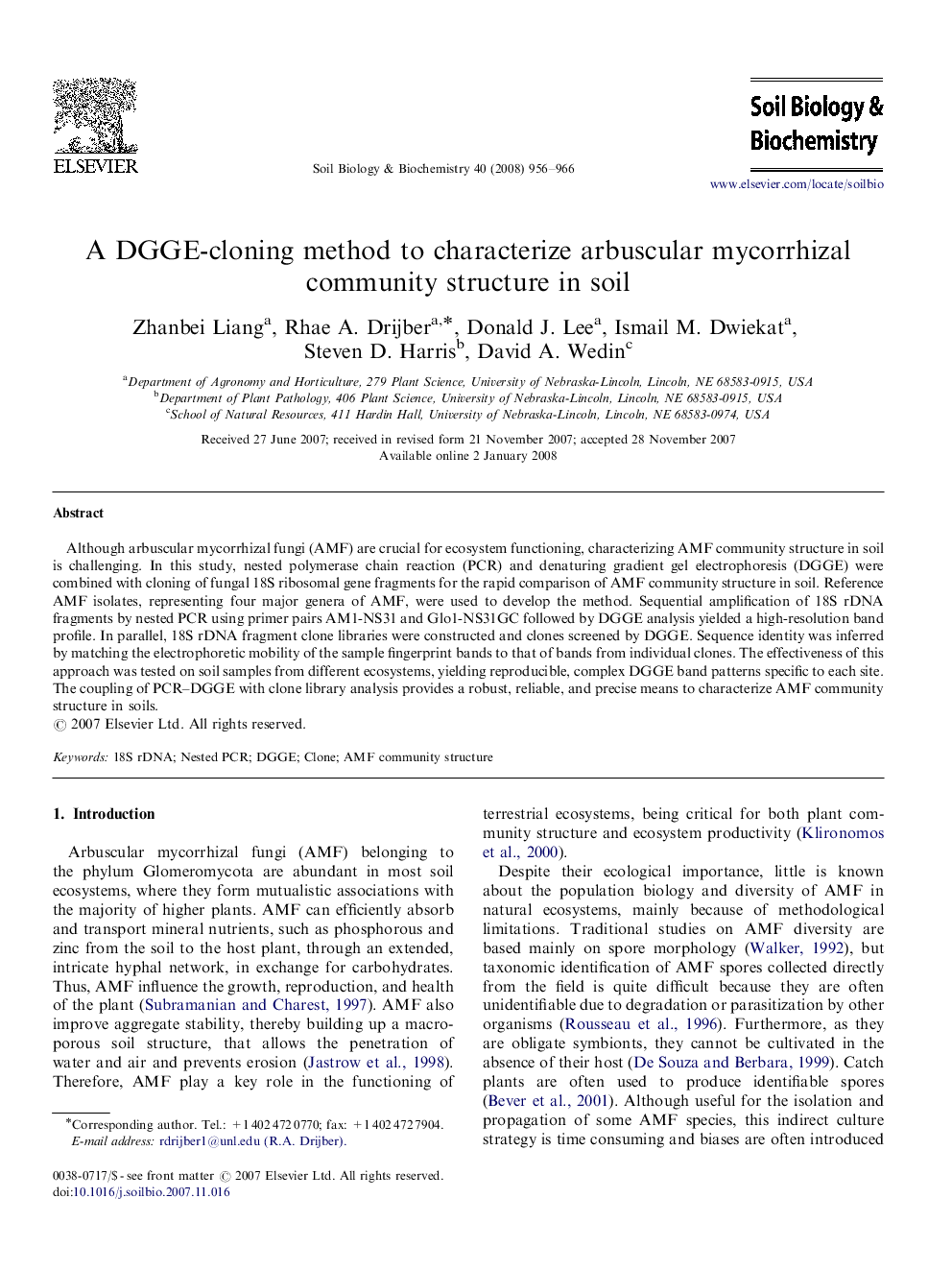| Article ID | Journal | Published Year | Pages | File Type |
|---|---|---|---|---|
| 2026448 | Soil Biology and Biochemistry | 2008 | 11 Pages |
Although arbuscular mycorrhizal fungi (AMF) are crucial for ecosystem functioning, characterizing AMF community structure in soil is challenging. In this study, nested polymerase chain reaction (PCR) and denaturing gradient gel electrophoresis (DGGE) were combined with cloning of fungal 18S ribosomal gene fragments for the rapid comparison of AMF community structure in soil. Reference AMF isolates, representing four major genera of AMF, were used to develop the method. Sequential amplification of 18S rDNA fragments by nested PCR using primer pairs AM1-NS31 and Glo1-NS31GC followed by DGGE analysis yielded a high-resolution band profile. In parallel, 18S rDNA fragment clone libraries were constructed and clones screened by DGGE. Sequence identity was inferred by matching the electrophoretic mobility of the sample fingerprint bands to that of bands from individual clones. The effectiveness of this approach was tested on soil samples from different ecosystems, yielding reproducible, complex DGGE band patterns specific to each site. The coupling of PCR–DGGE with clone library analysis provides a robust, reliable, and precise means to characterize AMF community structure in soils.
